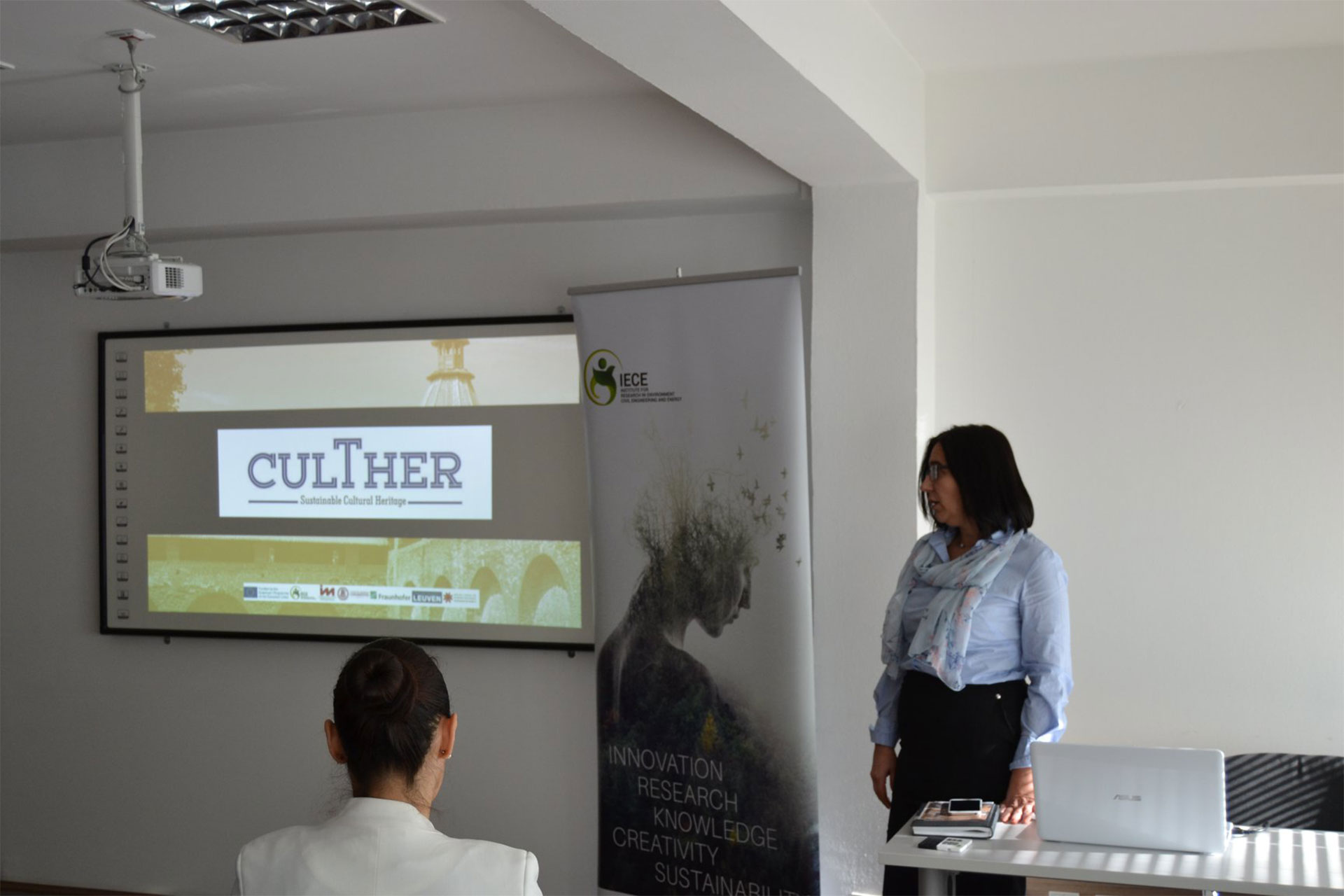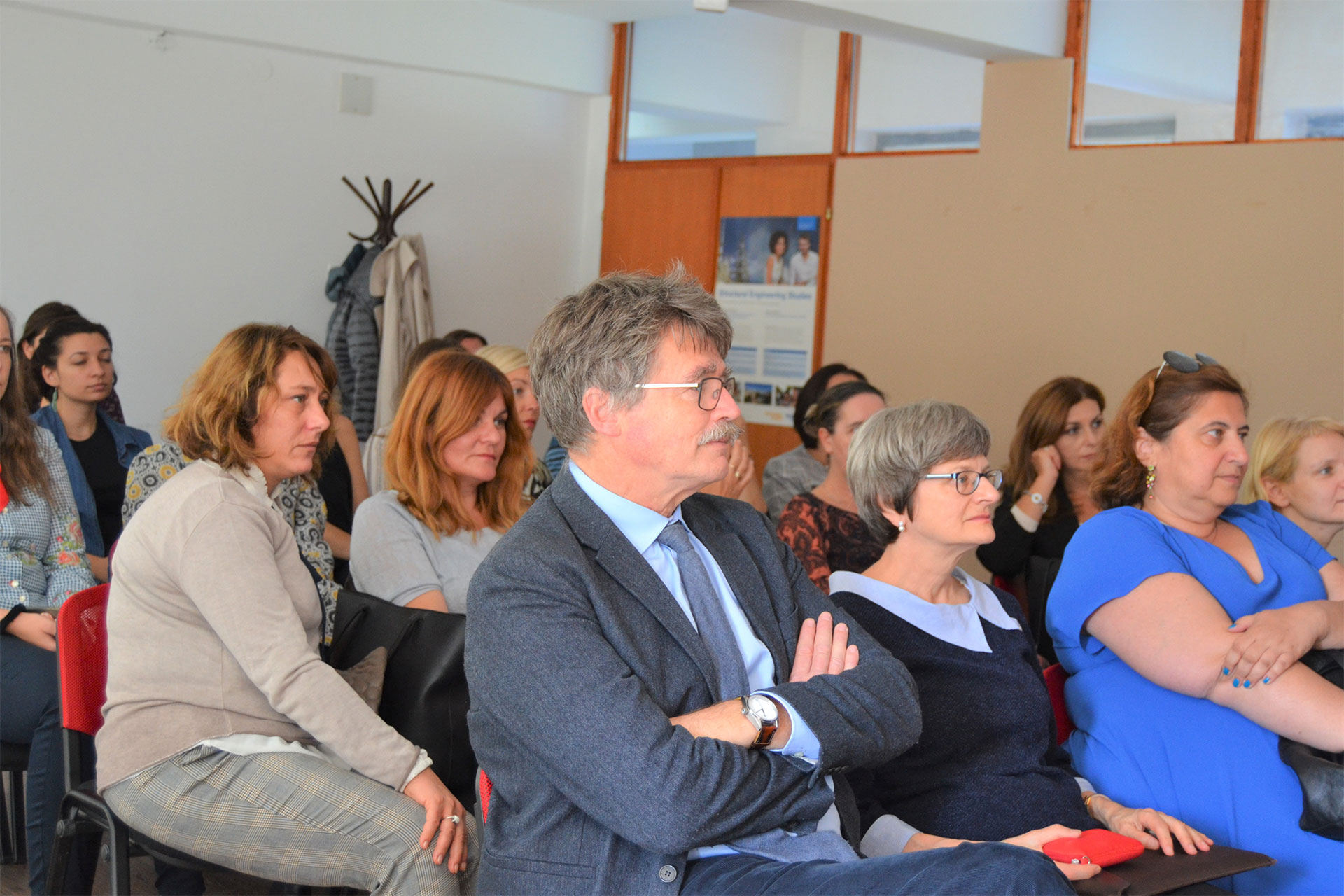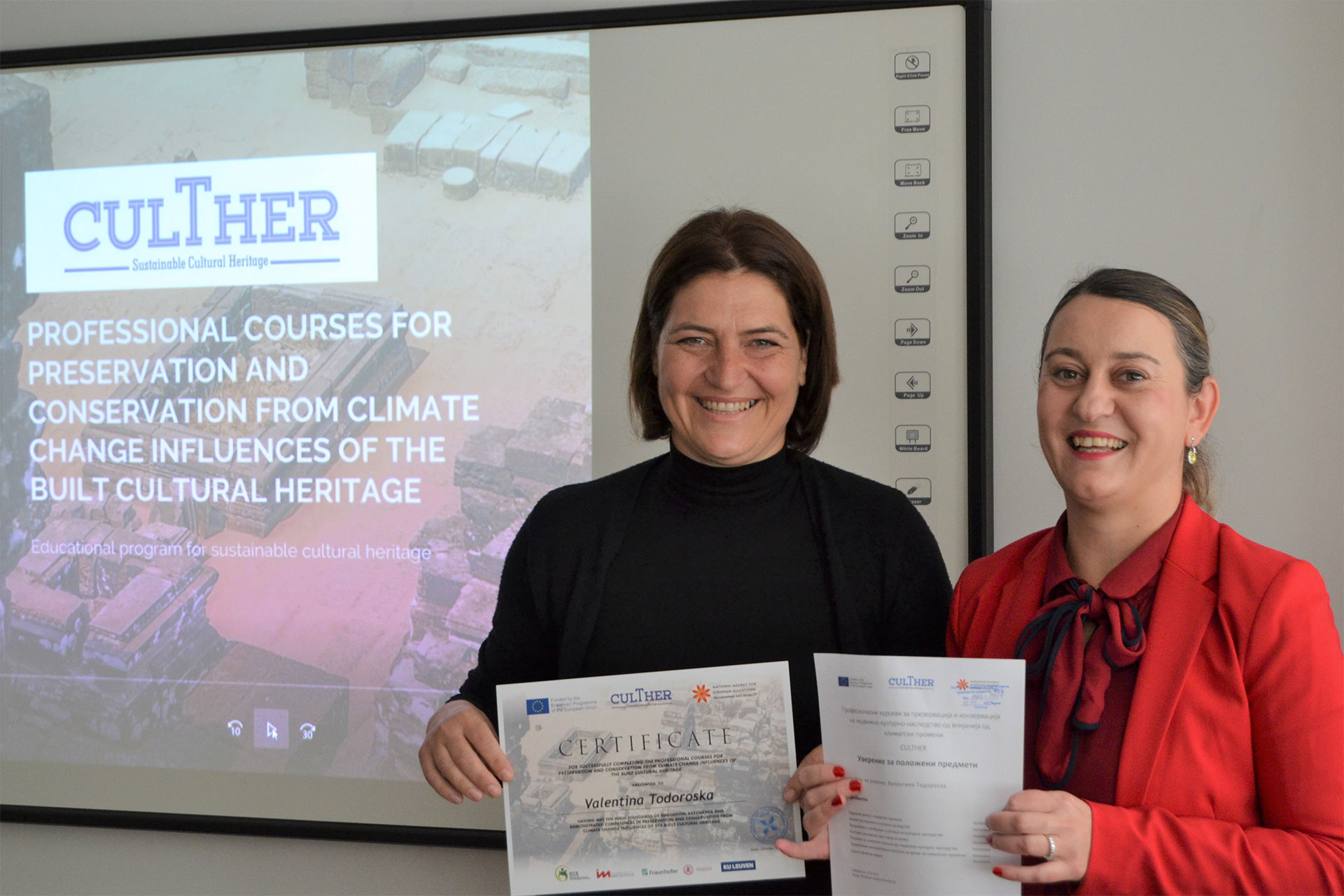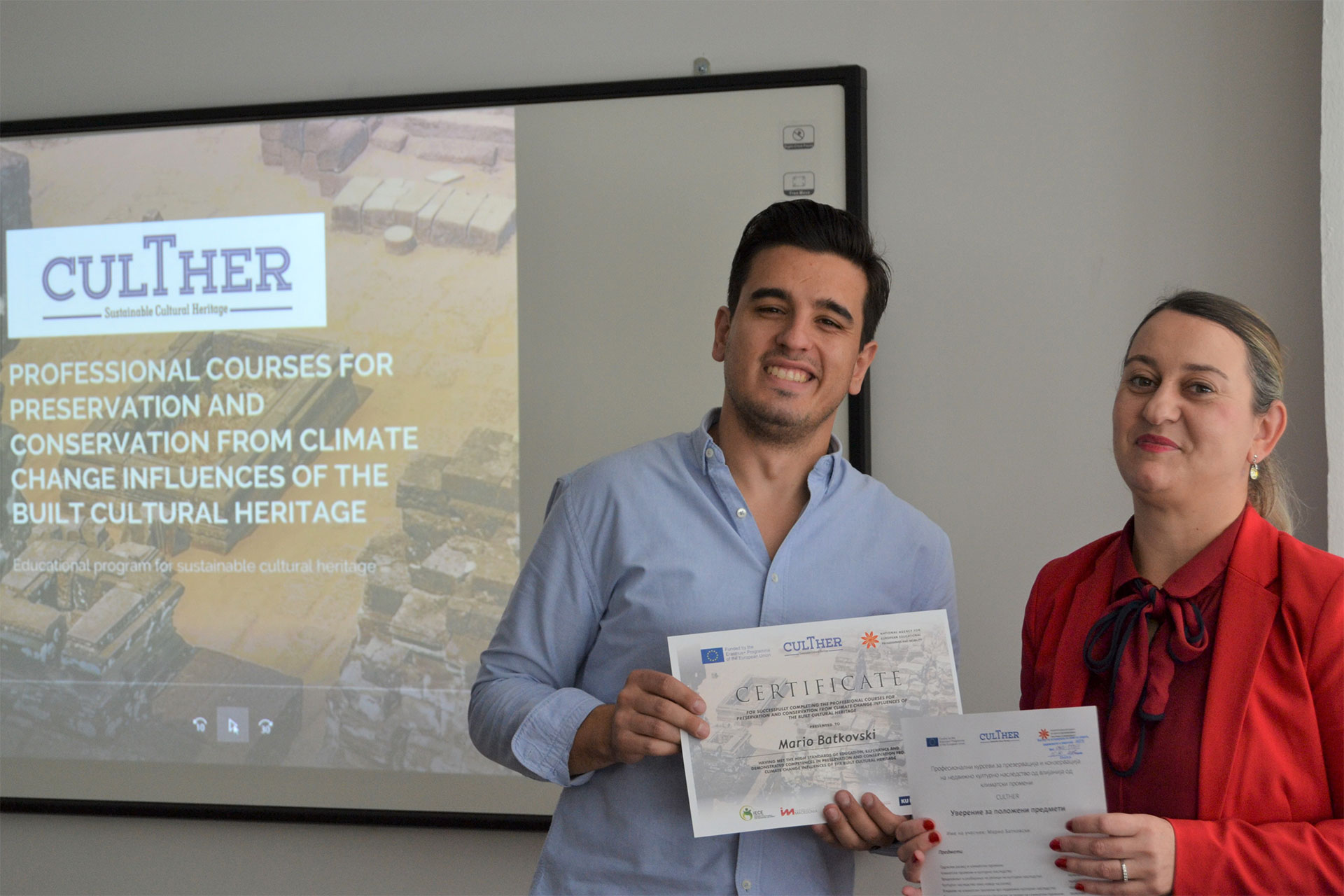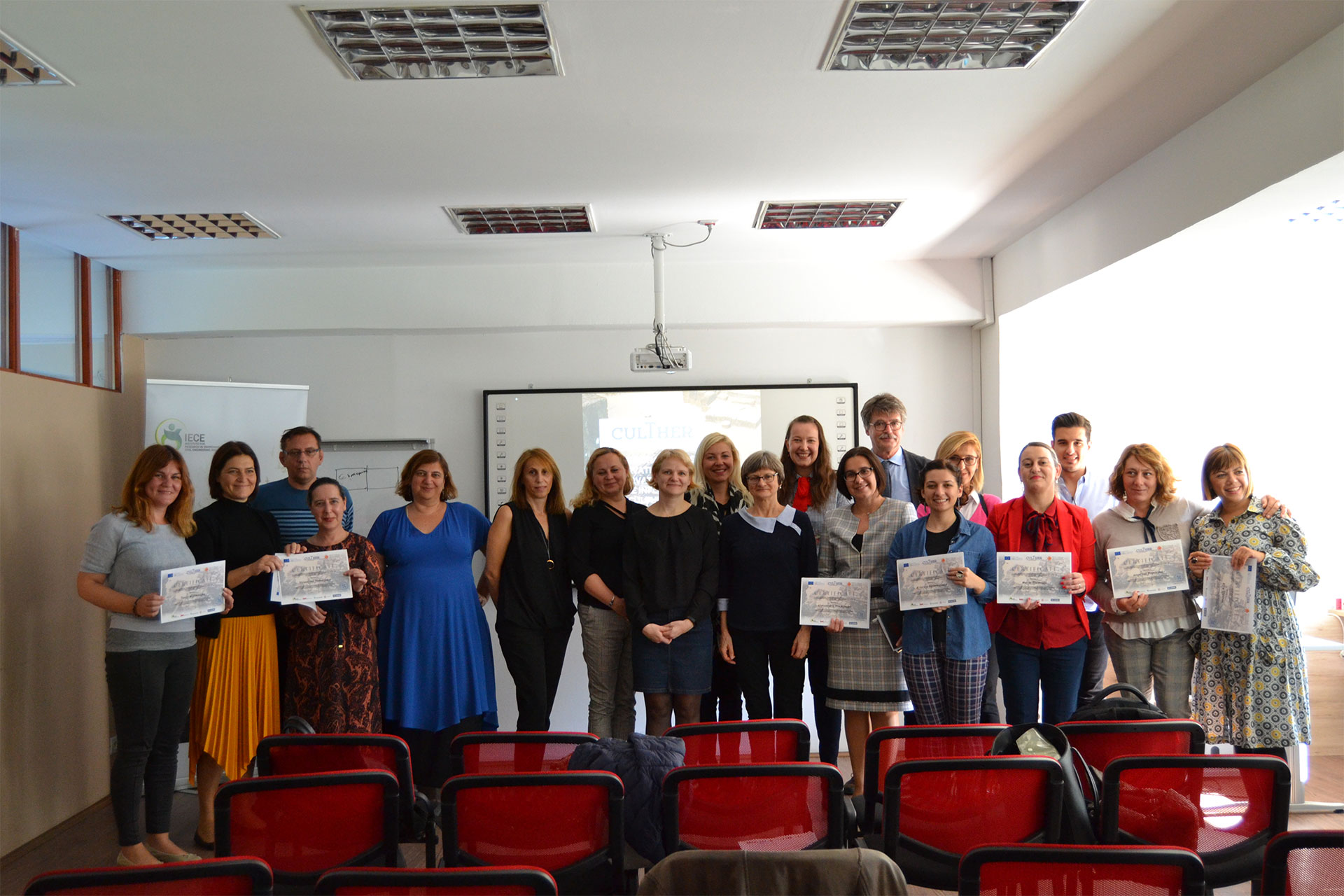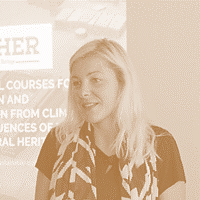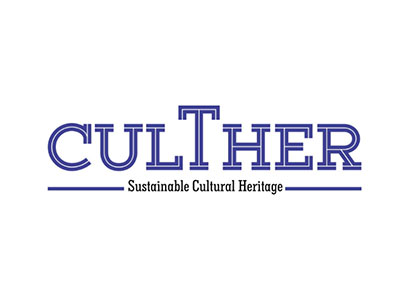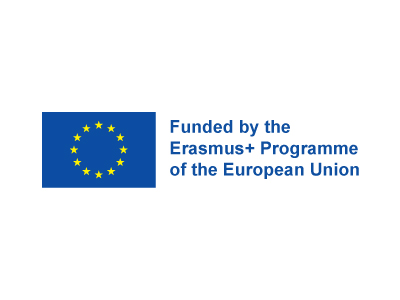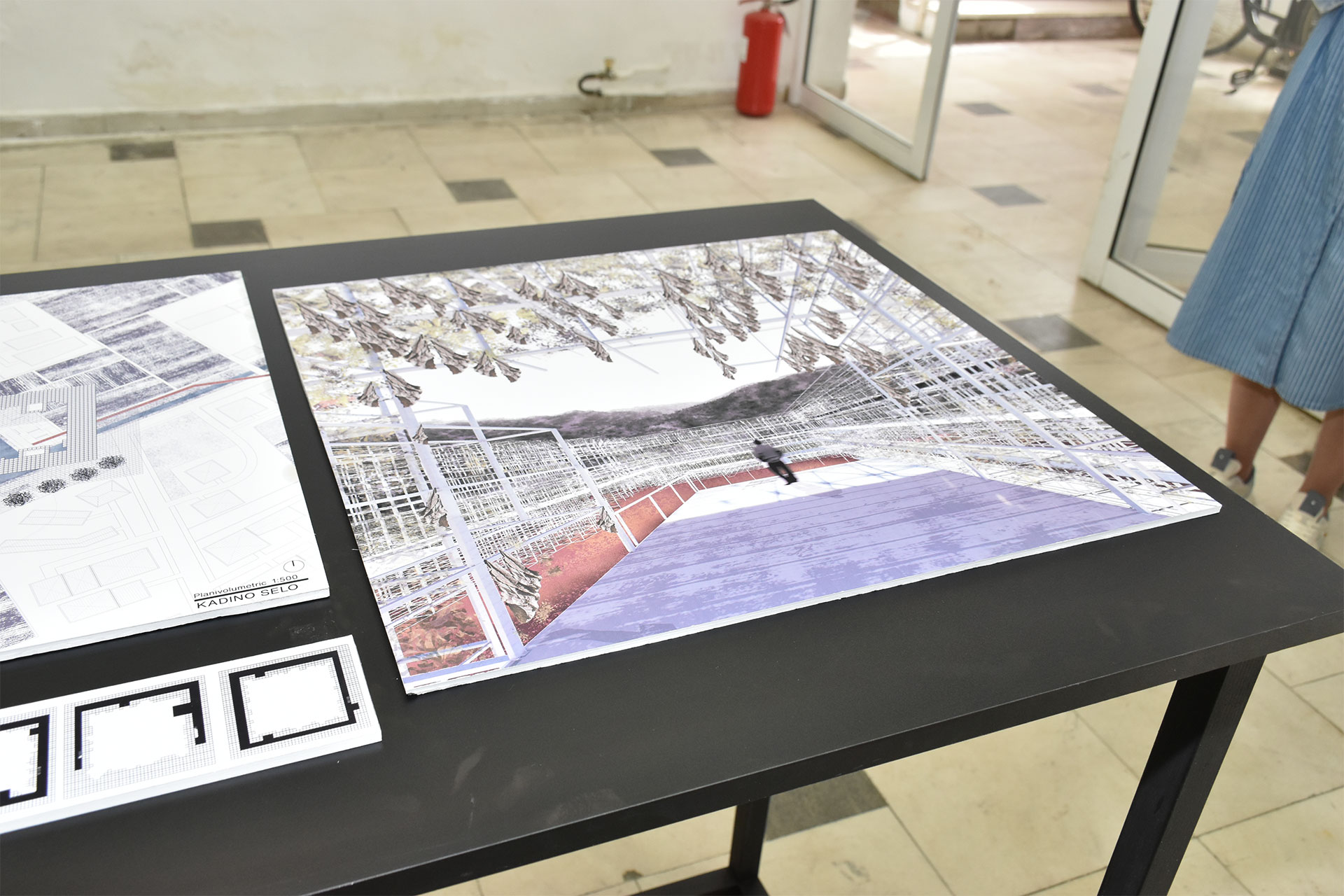Conservation and prevention of our cultural heritage is the crucial key for the sustainable development of our country. Being a professional conservator requires specific techniques, creative ideas and minds, and special skills and knowledge.
The wider objective of this project is to develop sustainable solutions of conserved built cultural heritage that will contribute to the sustainable future of our country. The most important priority within the project is enhancing the quality and relevance of VET learners` s knowledge and skills by developing professional courses for sustainable cultural heritage.
Within our project, we designed joint courses for preservation and preventive conservation of cultural heritage from climate change influences, using innovative and VET learner-centered approaches and developing appropriate assessment and certification methods.
Target groups: The target group consists of archaeologists, architects, chemists, and engineers working in national and governmental bodies, the private and non-profit sector, and are willing to become highly skilled conservators and integrate strategies for sustainable built cultural heritage. Also, the target group are students who have an interest and plans to work in the field of conservation and sustainable cultural heritage.
Project results
- Expand the knowledge for conservation and preservation of the built cultural heritage through the improvement of competencies in the field of conservation;
- Develop a new innovative educational program for conservation and preservation of built cultural heritage from climate change influences;
- Create exceptional quality of VET education, combining a high level of excellence and attractiveness;
- Learn innovative techniques on conservation to develop solutions for sustainable cultural heritage.
Coordinator:
- Institute for Research in Environment, Civil Engineering, and Energy – IECE – https://www.iege.edu.mk/
Project partners:
- Fraunhofer Gesellschaft zur Foerderung der Angewandten Forschung e.v., Germany – https://www.fraunhofer.de
- Vytauto Didziojo Universitetas, Lithuania – https://www.vdu.lt/
- Kathoueke Universiteit Leuven, Belgium – https://www.kuleuven.be/
- Civil Engineering Institute Macedonia, Macedonia – https://www.gim.mk/
- Analyses of the needs and challenges of conservators and the sustainability of the cultural heritage;
- Analyses of courses and training programs in conservation and prevention of built cultural heritage in Europe;
- EU standards for conservation and preservation of cultural heritage;
- Curriculum for courses in preservation and preservative conservation in built cultural heritage and Elaborate for certification of the courses;
- Practicum;
- ICT learning environment for the courses;
- Handbook;
- Booklet;
- Exploitation Plan;
- Promotional activities and recruitment and selection of pilot group of learners;
- Implementation of joint program, mobility of trainers and participants;
- Key Findings;
- Brochure;
- Flayer
- Introduction to Sustainable development and Climate Change
- Climate change risks and impact on cultural heritage
- Valuing and understanding threats to cultural heritage
- Cultural heritage as a resource for development
- Impact of climate change on built cultural heritage
- Preventive conservation strategies in the times of climate change
As a professional in preserving and restoring cultural heritage, I can understand how difficult it is when you constantly face the devastation, damage, or irreversible destruction that always puts my mind in a state of healing or remediation, or as, shield, to prevent or protect from damages. On the other hand, the term sustainability cements a deeply secure dimension, and this is why this course of knowledge and learning about sustainable environments always finds a logical way to provide valuable future support for the world’s precious, cultural heritage, by studying the phenomena of dramatic catastrophes while leaving us in a safer, oasis,, where things always find a logical way.
As a heritage practitioner working in the field of protection and management of cultural heritage, it is of utmost importance to have the awareness and knowledge on the impact of climate change on cultural heritage and its natural surroundings, human societies and the ecosystem. In this regard, the CULTHER professional courses for preservation and conservation from climate change influences on the built cultural heritage really met my expectations in providing us with different approaches and tools for integral protection of the cultural heritage, through group work, presentations and lectures by international heritage experts. In addition, it provided a great platform for exchanging lessons and experience among the various heritage practitioners who attended these courses.
From conservator’s point of view, I would say that CultHer professional course was truly useful experience, and more from this kind are needed for improving and raising the level of cultural heritage protection. In base in the nature of conservator’s job and jobs alike, is very important to bring together knowledge from several scientific fields which makes them very interdisciplinary and complex. CultHer professional course brought together chemists, archaeologists, conservators and architects and that was really valuable. This is a great opportunity for everyone who is striving to go further in the career. I hope so that there will be more CultHer courses which will elaborate different aspects of Cultural Heritage. I am grateful that I was part of it. “The course totally overcome my expectations. Even the smallest Erasmus project can change your perspective a bit. It’s actually the experiences, happiness, craziness, and openness which makes this project a great opportunity. It’s the entire package, rather than one lesson, which I will value forever. What remains is the love and friendship I found there and the people who are still fresh in my mind.”
Implementation period
December 2017 – December 2019
Project keywords
Climate changesCultural heritageErasmus+SustainabilityVET education




